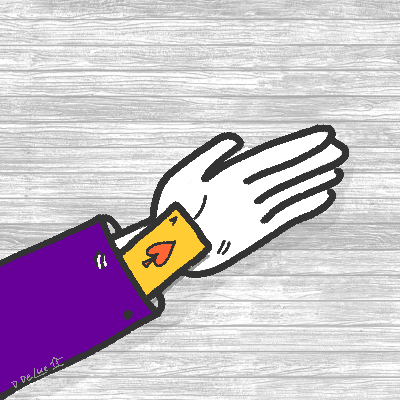Spark Creative Conversations with Visuals
The Art of Applied Visual Thinking
If you're reading this, you most likely agree with us at AVT that building a visual vocabulary is really handy. Here's yet another way you can leverage your icon library to fuel innovation and foster synergy in your conversations at work.
First, let me paint the scene. I was working with a phenomenal team of facilitators to plan a brainstorming event as part of a strategic planning project. The wisdom and care in the group was awe-inspiring. Each facilitator brought different skillsets, perspectives and concerns to the conversation. I learned a ton.
Three takeaways stuck with me from working with this group of experienced facilitators.
If your work involves collaboration, idea generation or co-creation, read on.
1. Show, don't tell.
An amazing English teacher taught me to use a character's actions and dialogue to convey how they feel rather than telling the reader outright, "He felt anxious about presenting her idea in front of her former boss."
As we were planning how to structure and lead the in-person event, we often shared visual representations. Seeing examples was much more helpful than merely talking about the activities and formats we might suggest. It's amazing how much faster a group can reach consensus when everyone understands what each other are talking about!
Here are a few examples of diagrams that can be used as a container or template to collect the golden nuggets from complex brainstorming conversations.
2. Stay in service
to the work.
The client was a non-profit whose mission focuses on eliminating the barriers to community-owned solar development. When creative tension arose, the lead facilitators gracefully put the desired goal in the forefront. In some cases, what helped were
examples that could be shared and compared in real time. The solution that would most likely and most directly result in the desired outcomes was chosen at each turn.
What might staying in service to the work mean in terms of Visual Thinking? If you are choosing an icon to represent a topic or idea, you have choices. You can select the first one that comes to mind, which may be the most easily recognized by the majority, or you can think about an icon (or a combination of icons) that might come even closer to the whole idea you want to capture.
For example, here are 3 tools that can be used for group consensus building to understand the perspectives of others. Surfacing how people feel early on during the process can help set the stage for smoother decision making.
3. Seek consensus.
No one person has all the answers, particularly when it comes to work that must meet the needs of a large set of constituents. Having a diverse group of people in the room is therefore vital to finding the best path forward.
With diversity comes difference of viewpoints, which can lead to differences of opinion about how to do things. One such moment of creative tension happened at our event. I was heartened at how viewpoints were expressed honestly in the moment, differing opinions discussed in a civil manner, and the work paused until there was agreement that the concerns had been heard and addressed.
Here are a few concepts you can
draw upon
(like what I did there?) next time you are seeking consensus with a group. I’ve included a few icon examples. Try your hand at these or come up with some of your own.
- Active listening
- Collaboration
- Common goals
- Dot voting
- Growth mindset
- Inclusion
- Mediation
- Teamwork
- Unity
- Win-win












